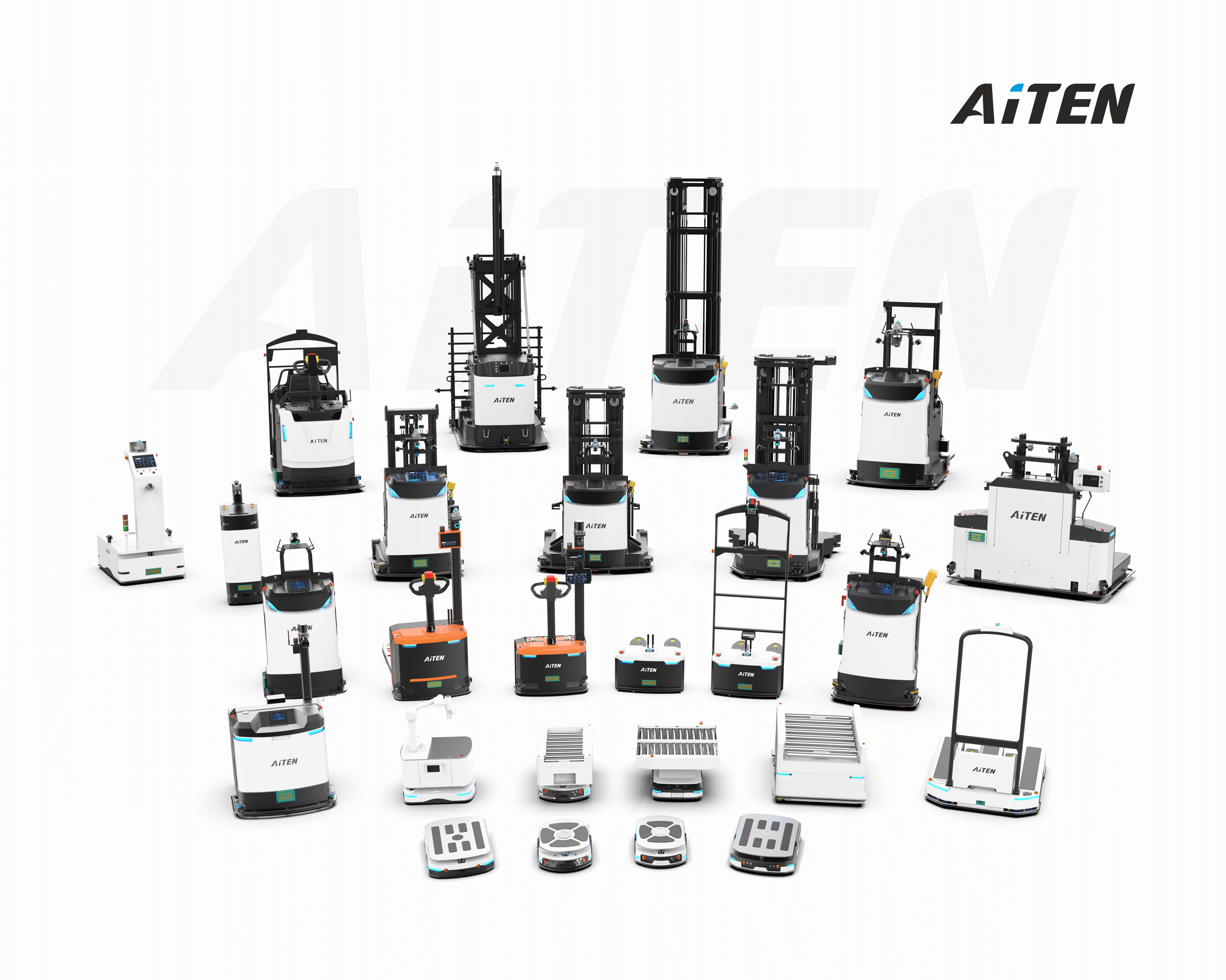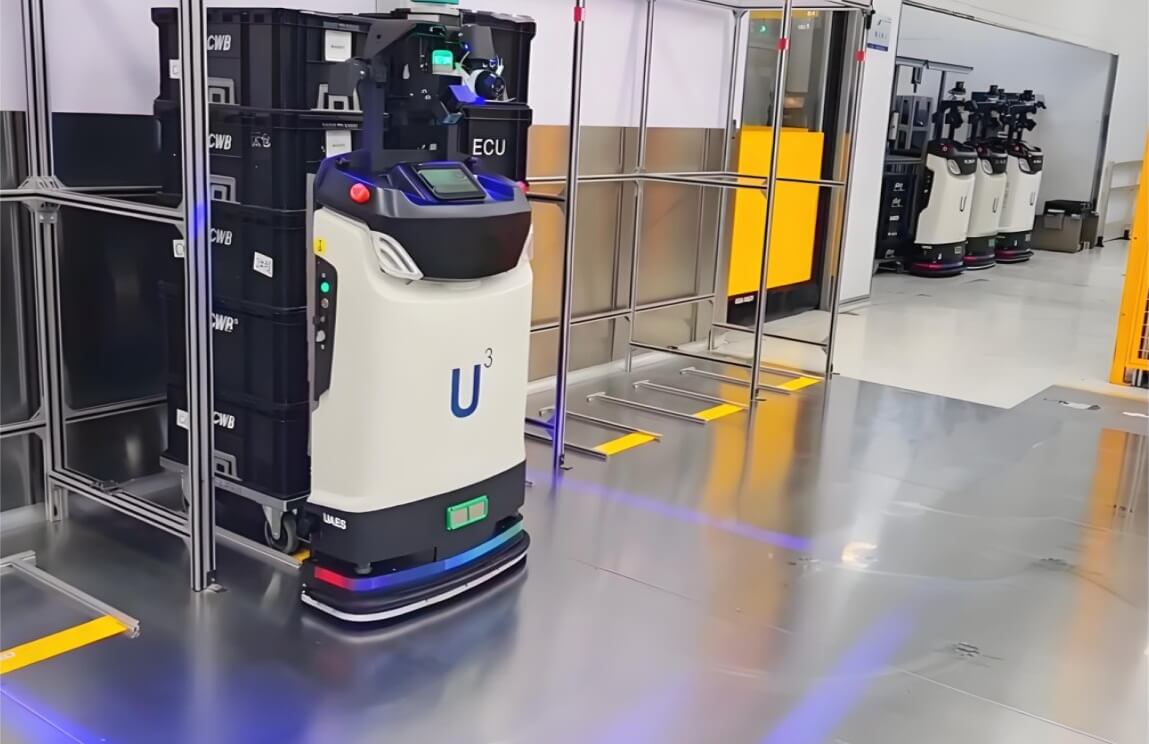Navigation Methods for Autonomous Forklifts
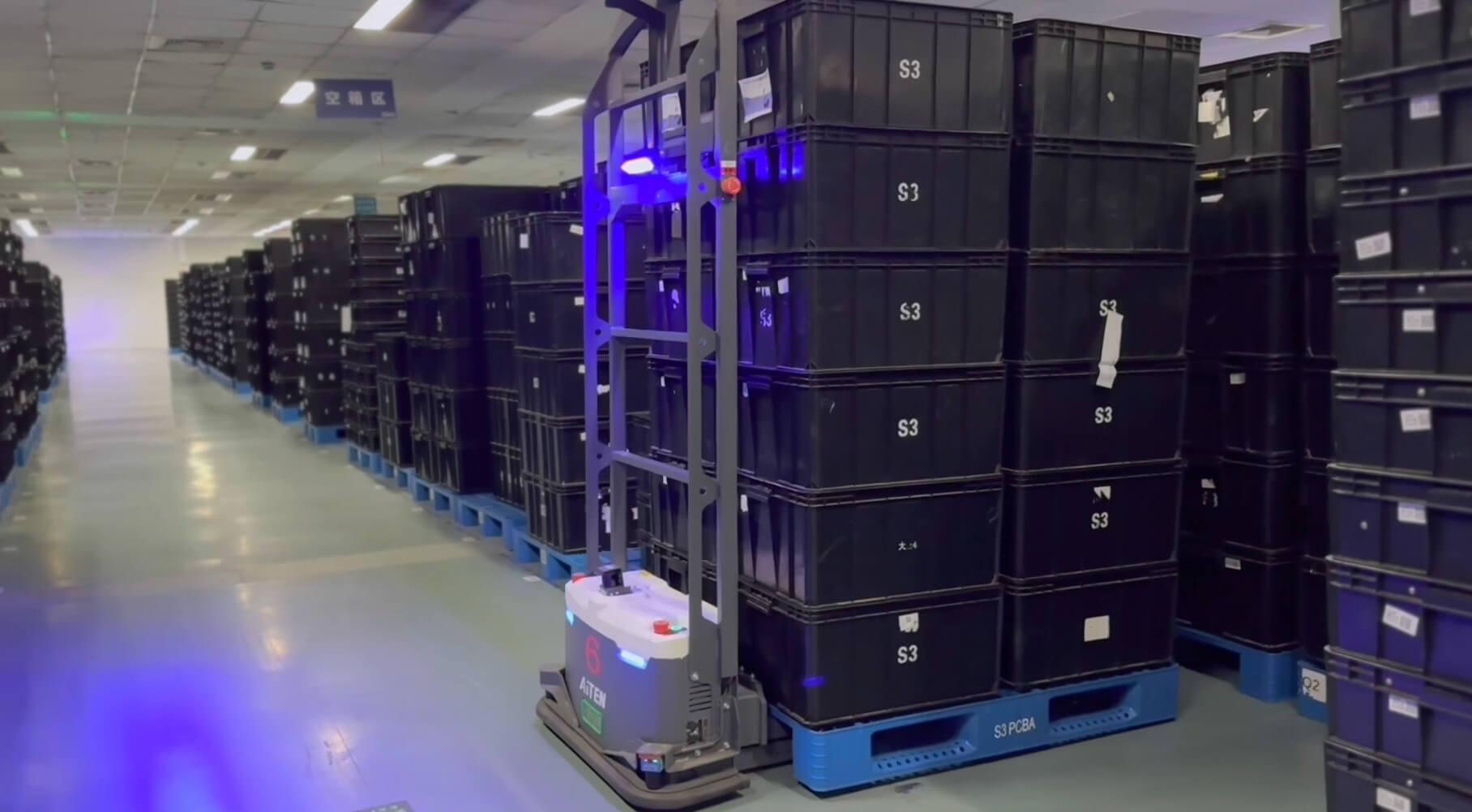
What Is Navigation in Autonomous Forklifts?
Amidst the wave of upgrades in intelligent manufacturing and smart logistics, autonomous forklifts (also known as AGV forklifts) have become core equipment for warehouse handling and production line feeding. Navigation technology, as their core competitive advantage, directly determines handling efficiency and system flexibility.
Current mainstream technologies encompass magnetic navigation, laser SLAM navigation, and visual navigation, each possessing distinct application scenarios and characteristics. Selecting the appropriate navigation method requires comprehensive consideration of factors including facility environment, operational requirements, and budgetary constraints. This article provides an in-depth analysis of prevailing navigation approaches, aiding you in comprehensively understanding their technical foundations.
Main Navigation Methods of Autonomous Forklifts
1. Laser Navigation
Laser navigation represents the prevailing direction in current technological development, primarily categorised into reflector-based navigation and SLAM navigation.
Laser SLAM (Simultaneous Localisation and Mapping) constitutes the most advanced navigation technology available today. Forklift trucks utilise laser scanners or visual cameras to continuously scan environmental features during operation, simultaneously constructing an environmental map and determining their own position within it.
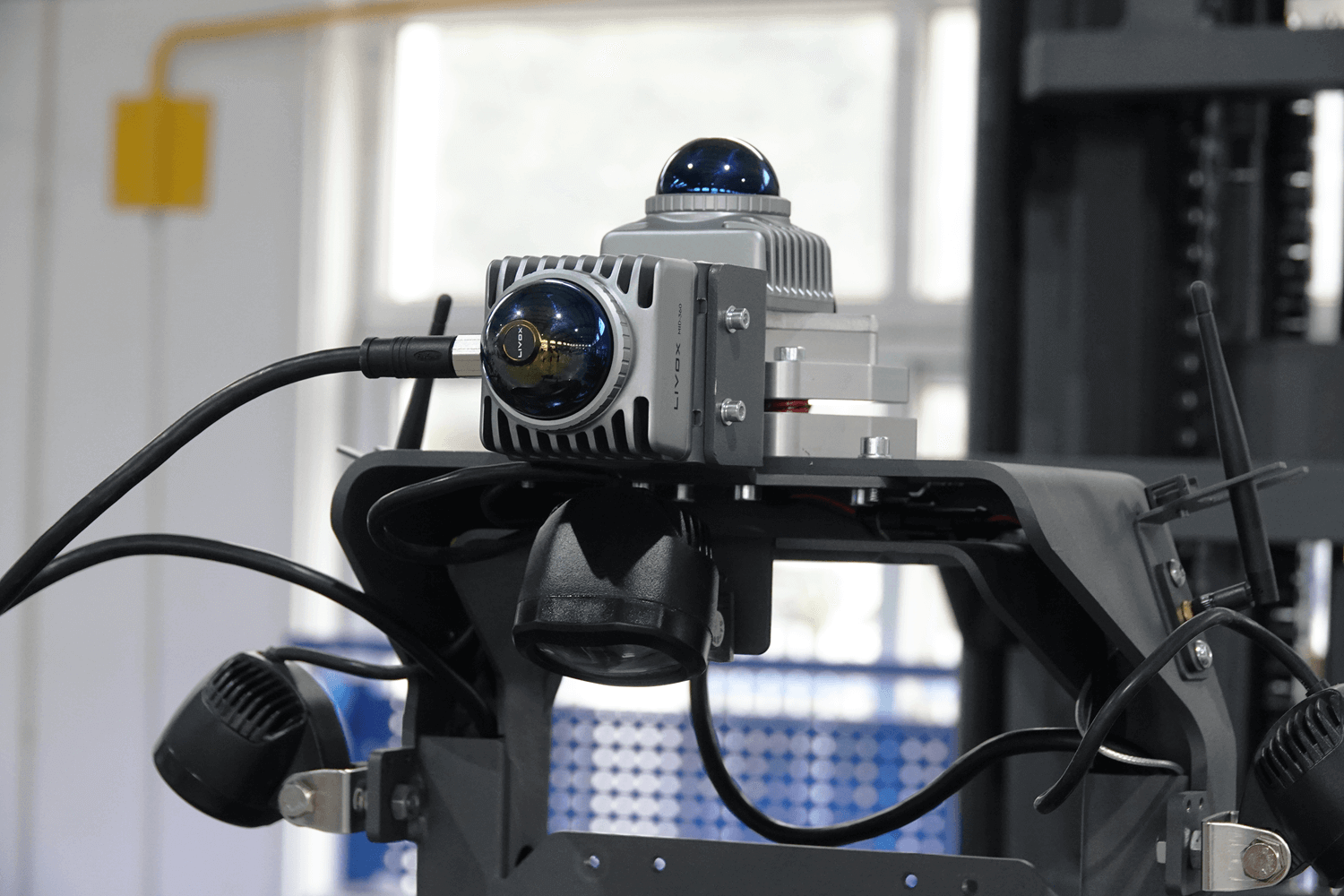
Advantages:
- No infrastructure required: The foremost benefit requires no modifications to existing premises for rapid deployment.
- Highly intelligent: Capable of adapting to dynamic environments with superior obstacle avoidance and route-finding capabilities.
- Strong cluster compatibility: Supports coordinated scheduling of dozens of forklifts, suitable for large-scale automated warehouses.
Disadvantages:
- Technological complexity: Involves intricate algorithms with high technical barriers.
- Significant cost: Requires substantial initial investment in both hardware and software.
Laser navigation involves installing precisely positioned laser reflectors around the travel path. The unmanned forklift determines its current position and direction by emitting laser beams and collecting the reflected signals.
Advantages:
- High precision: Accurate positioning with a tolerance of ±10mm.
- Flexible routing: No ground modifications required; travel paths can be adjusted via software, offering high adaptability.
- Smooth operation: Rapid speed with stable movement.
Disadvantages:
- Relatively high cost: Deployment expenses for LiDAR sensors and reflectors are comparatively significant.
- Stringent environmental requirements: Reflector positioning must be fixed, and the environment must be free from excessive obstructions that could block the reflectors.
2. Vision Navigation
Visual navigation is an emerging navigation technology. By utilising cameras or AI vision algorithms to recognise landmarks, shelving units and aisles, it achieves path recognition and positioning. It is commonly employed in intelligent warehousing, manufacturing production lines and human-machine collaborative operation scenarios.
Advantages:
- Significant cost potential: Camera hardware costs are relatively low.
- Maximum flexibility: Requires no ground infrastructure and can rapidly adapt to frequently changing operational routes.
Disadvantages:
- Sensitive to ambient lighting: Excessively dim, bright, or shadowed conditions may impair recognition performance.
- High computational demands: Image processing requires substantial processing power.
- Feature dependency: Requires sufficient textural features on the ground or in the environment.
Suitable applications:: Indoor environments with stable lighting and clean surfaces, often used in conjunction with other navigation methods.
3. QR Code / Magnetic Tape Navigation
Magnetic strip navigation guides forklifts along predetermined routes by laying fixed markers on the ground.
Magnetic navigation stands as one of the most technically mature navigation methods. This approach offers low cost, proven technology, and precise, reliable positioning. However, its drawback lies in the requirement for pre-installed magnetic strips, necessitating reconstruction when altering paths and resulting in higher maintenance costs.
QR code navigation is extremely commonplace in e-commerce warehouses.
Advantages:
- Low cost: Simple technical implementation results in relatively low overall expenditure.
- High precision: Each QR code scan provides absolute positional calibration, eliminating cumulative error.
- High reliability: The technology is mature and stable.
Disadvantages:
- Fixed paths: Travel routes are strictly confined by QR codes, offering minimal flexibility.
- High maintenance requirements: Floor-mounted QR codes are prone to wear and soiling, necessitating regular upkeep and replacement.
- Aesthetic impact: Extensive QR code coverage on surfaces may compromise site appearance and cleanliness.
4. Inertial navigation
Inertial navigation is not typically employed as a standalone system but rather serves as an auxiliary navigation aid, supplementing other systems.
By measuring the angular velocity and acceleration of the forklift via sensors such as gyroscopes and accelerometers, the vehicle's position, orientation, and velocity are calculated through integration.
Advantages:
- Strong environmental adaptability: Independent of external signals, unaffected by ambient lighting or obstructions, with high short-term accuracy.
- Rapid response: Captures forklift posture changes in real time, assisting in path deviation correction.
Disadvantages:
- Accumulative error: Positioning inaccuracies build up over extended operation, necessitating periodic recalibration.
- Calibration dependency: Requires integration with technologies such as QR codes or lasers to form hybrid navigation solutions.
Suitable applications: Primarily employed in conjunction with other navigation systems (e.g., QR codes, lasers) to provide continuous positional data during brief periods when primary signal sources are unavailable.
5. Hybrid Navigation
Combines multiple navigation methods, such as laser + vision or laser + QR code, to achieve higher accuracy and robustness.
Choosing the Right Navigation System
The choice of navigation method depends on your specific requirements:
Seeking high flexibility and future scalability? SLAM navigation or laser navigation is your preferred option.
Budget constraints with fixed routes? QR code navigation offers an economical solution.
Complex environments where markers cannot be installed? SLAM navigation is the only viable solution.
Requiring extremely high-precision docking and positioning? Both laser navigation and QR code navigation can meet these demands.
It is noteworthy that to leverage complementary strengths, multi-technology integrated hybrid navigation is emerging as an industry trend. Examples include ‘SLAM + inertial navigation’ and ‘laser + QR code’ systems, enabling autonomous forklifts to deliver optimal performance across diverse operational environments.
For instance, AiTEN Robotics' autonomous forklifts employ laser SLAM and hybrid navigation technology, balancing precision, flexibility, and reliability. They are widely deployed across automotive parts, 3C electronics, home appliances, and manufacturing logistics sectors.
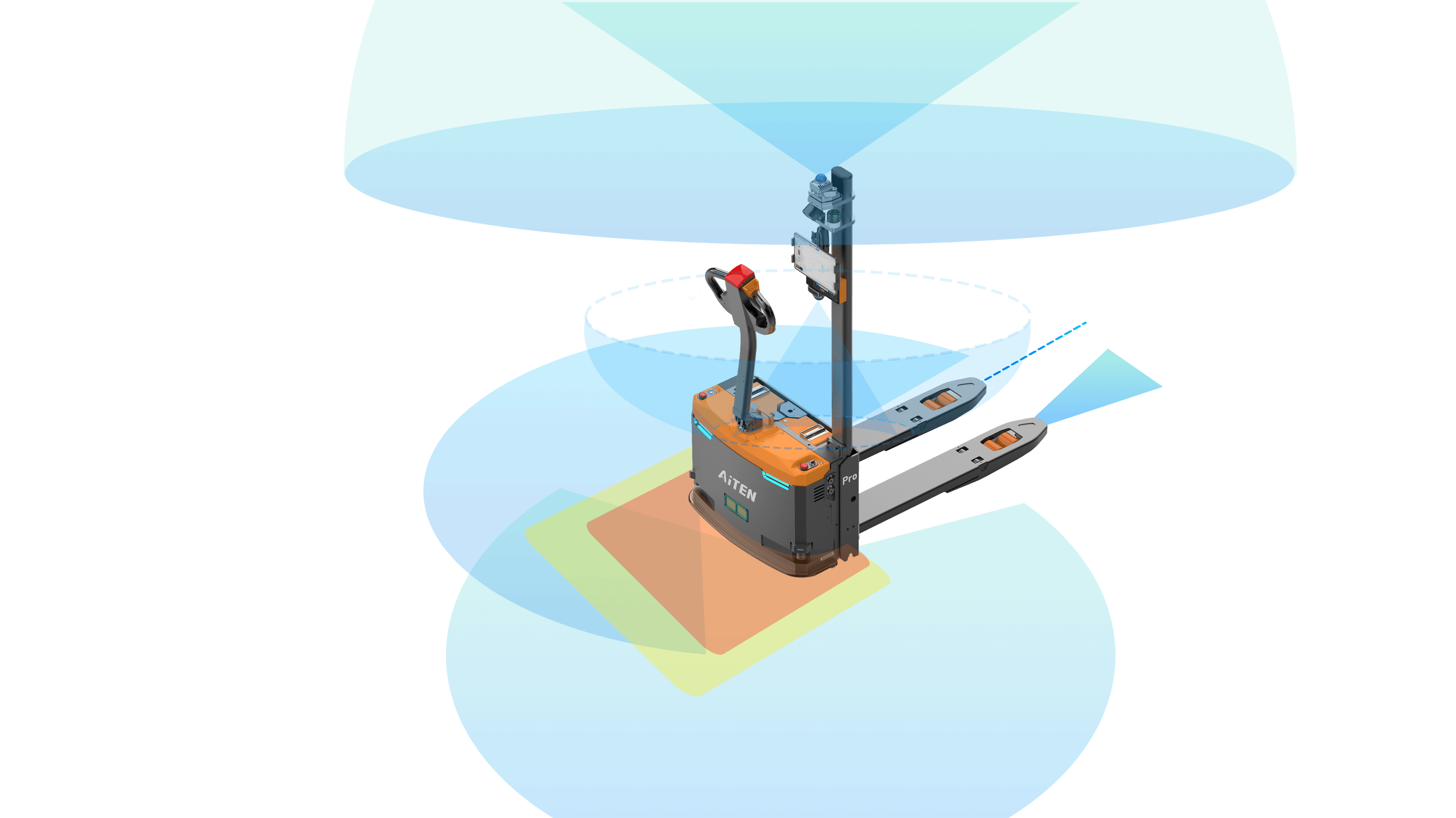
Navigation technology for autonomous forklifts continues to evolve rapidly. Understanding the principles and distinctions of these core navigation methods will empower you to make more informed and forward-thinking decisions on your journey towards Industry 4.0 and smart logistics.
Conclusion
As technology continues to advance, the navigation systems of autonomous forklifts will undergo continuous evolution, delivering increasingly intelligent and efficient solutions for modern logistics operations.
Selecting the navigation method for autonomous forklifts requires a comprehensive assessment. Enterprises should choose the most suitable navigation solution based on their specific operational requirements, environmental characteristics, and development plans to fully realise the value of autonomous forklifts within logistics automation.
About AiTEN Robotics
As a company specialising in intelligent logistics solutions, AiTEN Robotics has consistently focused on the ‘smart factory’ scenario, deeply integrating technological innovation with industry needs. It has provided comprehensive services to over 200 manufacturing clients worldwide: Leveraging a full range of material handling robot product portfolios to cover diverse material handling scenarios, we have developed an industry-grade intelligent scheduling system to enable efficient collaboration among multiple devices. Through a comprehensive lifecycle service system spanning pre-sales planning, deployment and implementation to operations optimization, we empower enterprises to achieve logistics intelligence transformation, continuously driving the digital upgrading and high-quality development of the manufacturing industry.
Is your warehouse prepared to embrace this efficiency revolution? Contact us immediately to secure expert consultation on AGV intelligent warehousing solutions!









_%E7%94%BB%E6%9D%BF%201.avif)
